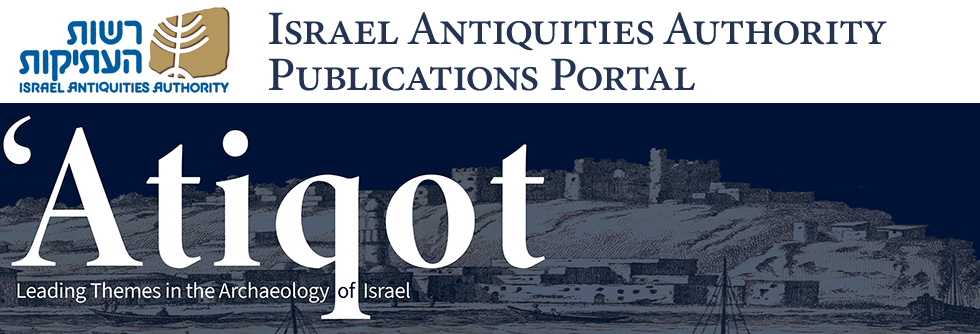Abstract
Excavations on the northern bank of the Refa’im Valley uncovered four sites: a shaft tomb and building remains with a standing stone dating to the Intermediate Bronze Age; a concentration of eight pits dating to the Intermediate Bronze Age and the Middle Bronze Age II; and an Ottoman-period agricultural watchtower. The building remains and installations were probably part of the Intermediate Bronze Age settlement along Naḥal Refa’im. The standing stone’s prominent location, and the large concentration of pits and installations near it, may support its identification with domestic worship. The thin fill at the bottom of some of the pits contained ash, potsherds and faunal remains, representing the refuse of locally slaughtered animals and suggesting that the pits were connected with the standing stone and used as favissae for the ritual interment of pottery and animal bones. Cave 500 was probably part of the Intermediate Bronze Age cemetery of the Naḥal Refa’im site, characterized by shaft tombs, and was reentered and possibly looted during Iron Age II.
Keywords
Intermediate Bronze Age, Middle Bronze Age, Iron Age, Jerusalem, cult, domestic worship, maṣṣebah, burial, favissa, fauna
Recommended Citation
Weksler-Bdolah, Shlomit and Onn, Alexander
(2024)
"Intermediate and Middle Bronze Age Settlement Remains, Domestic Worship, Pits and Burial Practices in Nahal Refaʼim, Jerusalem,"
'Atiqot: Vol. 116, Article 11.
DOI: https://doi.org/10.70967/2948-040X.1132
Available at:
https://publications.iaa.org.il/atiqot/vol116/iss1/11
Included in
Agriculture Commons, Biblical Studies Commons, Christianity Commons, History of Art, Architecture, and Archaeology Commons, Islamic Studies Commons, Science and Technology Studies Commons, Urban Studies and Planning Commons

